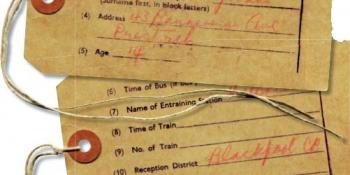MILITARIA
For Britain’s ports and shipyards, World War Two brought bombs and bluster as both the Luftwaffe and workers’ strike action hamstrung those vital assets
As an island nation, Britain relies on seafarers and international trade and, during both world wars, coastal cities were vital access points for Britain’s lifelines, essential for survival. But it was during World War Two that the nation’s ports and shipyards came under greatest pressure.
In the inter-war years, Britain annually imported some 70% – or 20 million tons – of foodstuffs. From 1939, the German air and sea blockade hampered this trade, sinking vital shipping in the Nazis’ attempt to strangle Britain. It was thus essential that the nation’s ports were kept open, and the shipyards built new vessels to replace those sunk. With rare artefacts, we examine this crucial battle, focusing on two representative coastal cities on either side of the country.
In late 1940, despite winning the Battle of Britain, the simple fact was that at night the RAF did not have air superiority: Luftwaffe bombers could roam and bomb largely wherever they wanted. The main limiting factor was not the RAF, nor other air defences, but the bombers’ range.
Wha…




